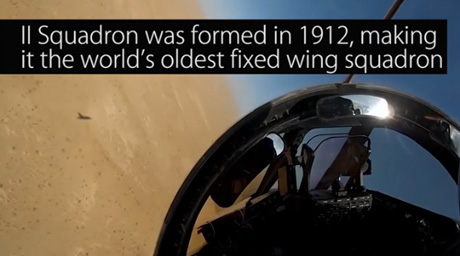
As today's web users are constantly surrounded by choice and content in all formats, online video producers have around five seconds to convince their audience to carry on watching, said The Telegraph's director of visual journalism Ben Clissitt, speaking at a British Society of Magazine Editors (BSME) event.
Clissitt, who will be joining Bloomberg as director of digital content for media (EMEA), shared 10 lessons he learned while working with online video at the Telegraph, at the 'video: how to create killer content (and make money)' event on 29 September.
He said many people pitching video to online media "audition to get jobs in television", but anyone looking to work with video on the web should be aware of the differences to keep viewers engaged until the end.
Here are his 10 pointers for creating great online video:
Online video is not TV
"The whole grammar of television and the grammar of digital video are completely different," he said, "and people shouldn't treat them in the same way."
He said there was a fight for attention online, and while people were automatically getting video content when they turned on their TVs, they needed to actively choose video over text-based articles or audio online.
Despite successful examples of longform video, he said, pieces that last around two minutes tended to do best online, and a fast pace of storytelling was also important.
He said web video was also a more intimate format than television. "People want to be in the moment... They want to press the button and feel like they are somewhere."
Words also matter
People were unlikely to click on a video unless they were persuaded by the words surrounding the clip online, he said.
Potential viewers need to understand why they should watch the content, why they should share it, and how long it will last.All organisations have the advantage of sending reporters into places where they are seeing things that no one else isBen Clissitt, director of visual journalism, Telegraph Group
"No one will come through the front door unless the words are right," he said.
It can get expensive
According to Clissitt, media outlets need to find the right balance between the effort of producing a video, and the financial return from its publication.
He said The Telegraph had a "blended output" that combined "high-input, high-effort video" with agency copy and the latest footage from international events.
Reporters can create great video
Without having to worry about getting a broadcast truck to the location of the story, reporters have the opportunity to create visuals "that will become really desirable" by filming with their smartphones during events or in places that would otherwise be closed off to broadcasters.
"What all organisations have is the advantage of sending reporters and staff into places where they are seeing things that no one else is seeing," he said.
Clissitt said around 70 reporters at The Telegraph were taught how to shoot video either on the iPad or iPhone, and all photographers at the media outlet were trained to shoot video as well.
Lewis Whyld, a visual journalist at The Telegraph, has been filming with a drone, producing "powerful video" like this story of recovery from Tacloban, in the Philippines, in the aftermath of Typhoon Haiyan.

Screenshot from Telegraph.co.uk
Invest in producers and post-production
Having both great producers, who decide what the media outlet is going to show, and a post-production team, who are going to make the video "really live", was an important step to creating engaging content.
"A lot of what really works online is about graphics [and] energy," he said.
A simple format that uses minimal resources for filming, like a video of a reporter in front of a green screen, can be turned into a compelling video with the right editing in post-production.The idea that people can sit at their desk and watch history happen is incredibly powerfulBen Clissitt, Telegraph Group
Publish more video
Clissitt told the audience the Huffington Post had a rule where 80 per cent of stories had to have video on the page.
"You've got all those clicks and all those eyeballs looking at content. Unless you give them the opportunity to watch a video they're not going to, and you're wasting all those eyeballs any time you publish a piece in which there isn't a video option," he said.
As the Telegraph publishes several hundred pieces of content each day, the media outlet has set up collaborations with video content producers on a revenue share basis to ensure the opportunity to get video in front of the audience is not missed.
Clissitt also advised bigger media companies to allow all departments to publish video, and to turn it into "something that everyone does and everyone can do" as opposed to specialised task for the video desk.
Get the right format
Another way for publishers to use online video to its full potential is to create content than can be more easily distributed through social networks, and stays relevant longer than its text-based counterparts.
Clissitt said The Telegraph focusses less on producing "news-reactive content," and more on creating a "family of content" like the '...in 60 seconds' series of explainers.

This video provides context around the II Squadron, as it's revealed it will help with air strikes in Iraq. Screenshot from Telegraph.co.uk.
"That becomes a recognisable form and it means that rather than our content on a particular day going down the river and going into the sea and never being seen again, that it has some kind of recirculation around it," he said.
Livestreams are addictive
Clissitt said the livestream format has worked well at The Telegraph. A livestream of the door of the Lindo wing of St Mary’s Hospital in July 2013, where the Duchess of Cambridge gave birth to Prince George, was accessed one a half million times while it was online.
"The idea that people can sit at their desk and watch history happen is incredibly powerful," he said.
Publishing can be more effective
Simply "churning out" video content was not enough, and the publication systems – the video player or media platform – could be more efficient at many media organisations, said Clissitt.
"Maximising and optimising the platform" was important he said, and viewers should receive content recommendations through "behaviour-based discovery".
Don't forget the commercial side
Clissitt said media outlets should look at ways to make video content that can work for sponsors and advertisers, but they should also understand how to do this in a way that is "acceptable" for the audience.
He called it a "virtuous circle", where editorial content was created in a way that allowed for sponsorship and advertising opportunities and was also popular with the audience.
Free daily newsletter
If you like our news and feature articles, you can sign up to receive our free daily (Mon-Fri) email newsletter (mobile friendly).
Related articles
- Theodora Louloudis, head of audio at The Telegraph, on audio-first journalism
- Leveraging audio to drive subscriptions and memberships
- "TikTok does not have the same environment for media partners as Snapchat"
- 'Coronabump' provides an opportunity for news outlets to grow loyal audiences
- World News Day: Misinformation, mobile journalism and mental health









